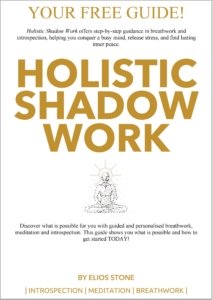The subtle effects on relationships from trauma bonding
What subtle behaviours do you have in relationships that relate to a trauma bond?
You may have heard of the term ‘trauma-bonding’ here and there. Certainly it seems to occur in many relationships, and sometimes, it’s much more subtle than you might think. There is a sliding scale of seriousness, but make no mistake, even subtle trauma bonding can deeply impact your life and cause suffering.
In early adulthood, I was in a hypervigilant state and holding trauma in my body. I was in patterns of addiction and living in a hyper vigilant state of being. I would often find myself either in work or social situations which would be high intense high energy spaces.
My nervous system had got used to feeling on edge and constantly doing. But this was deeply exhausting. I had no strategies or practices of self-nurture like I have today. When feeling exhausted both mentally and emotionally I would then self soothe. That self-soothing came in the form most often through food and alcohol. But I also self-soothed and sought to fill a hole in myself through relationships.
I learnt the hard way that feelings of loneliness cannot be wholly or permanently relieved by external things. External relief alone is fleeting and temporary.
But, in subtly trauma-bonded relationships, the bonding element can be profoundly addictive in nature. High levels of cortisol and adrenaline, followed by dopamine, serotonin and oxytocin create a love soup in our bodies. The big difference between this and healthy love is the pain and instability which accompanies it. Suffering, pain, self-criticism and self-loathing result from a trauma-bonded connection. This in itself leads to more dysfunctional attachment as you seek to soothe the pain of one disconnection with another of the same type!
So, self-soothing in relationships is just the tip of the iceberg in regards to trauma-bonding. When one or more people are connected together and cause each other harm or abuse and it develops into attachment, that is called trauma-bonding.
Even subtle physical and emotional patterns are glimpses of trauma bonding.
There are few more elements to trauma-bonding. Sometimes, the two people involved in the relationship can both abuse each other in different ways. Then they may find themselves defending each other’s abusive actions and rationalise them. Within their beings they can feel a deep sense of loyalty to the other person, so much so that they begin to isolate from the other people in their lives.
It can be incredibly subtle. Abuse doesn’t have to be obvious, physical or verbal abuse. It can be the withdrawal of emotional support in certain situations. Or the withdrawal of love or affection, based on the behaviour or actions taken by the other person. Conditional love.
Is any of this ringing true for you?
If any of this is starting to resonate with you, either from a past relationship or a current relationship, then of course you’re probably going to notice some alarm bells ringing.
There’s often a lot of talk about trauma-bonding when it’s more on the extreme side of things. For example, in abusive relationships, including but not limited to child abuse and certain hostage situations. Maybe you’ve heard about Stockholm Syndrome, a type of coping mechanism where someone who’s in an abusive situation or has become a captive develops positive feelings towards their abuser or captor.
I’m not going to go deeply into the psychology of trauma-bonding, it’s not my place. If you want to know more about this, there’s plenty of good books out there. If you are in an abusive relationship of this nature, then you should seek professional psychological support and get in contact with the Police.
Like I said, the subtler effects of trauma-bonding permeate far more relationships than those that are presented in the media or are of the extreme. All this stuff sits within the shadow until it comes to light. So long as you are safe to explore, this is where you can delve in and tend to what lies beneath these patterns within yourself. Individuals and couples can deepen their connection and heal some of the subtler elements of trauma-bonding through shadow work practices. To increase openness, vulnerability and freedom in many ways.
So maybe you’re asking yourself what can I do about this?
How do I know if this is happening to me?
There are some tell-tale signs:
Are there clear repeating patterns of pain and then reduced pain within the relationship? It may be that at times there is a great deal of pain and then feelings of love. There can be feelings of euphoria or of being in a type of utopic relationship followed by feeling drained or exhausted.
Maybe there is low simmering resentment and blaming resulting in massive explosions of anger and arguments. These can be then followed with reconciliation and acts of affection and unactioned promises. But then, the pattern arises again.
Things that really support transforming these types of relationships, whether they’re infringements or intimate relationships.
There can be subtle withdrawal of support. Sometimes outright denial of certain emotions.
1. Developing presence
This is obviously easier said than done, but there are simple steps you can take. A practice of meditation or breathwork to drop you into the present moment and the day-to-day living is going to help. Make a commitment to yourself that you’re going to stop holding on to what could happen tomorrow. What the future may be like with this person. Begin to let go of the “if only they….”, or “I wish they were”.
How are you feeling now? Do you feel trapped? Have you compromised any of your self-respect, self-worth or self-esteem specifically for this relationship?
2. Live in the real world
Make a conscious decision to stop fantasising about what may be. Make a commitment to yourself to live in this moment in truth and love. Be transparent and truthful with yourself about what’s going on in your relationship.
3. Boundaries
This is a massive one. If you don’t feel safe, and by not feeling safe I mean if you feel shame, blame, anger, anxiety, fear all of which can feel unsettling in the body in certain situations, it’s asking you for new boundaries. Create rules of safety within which you live in your life. This can be very individual for each person because you will have learnt about boundaries in the past from your parents and/or caregivers. You will have also taken on people-pleasing related patterns from them, which are essentially boundary issues. All of this may need unpicking on a deeper level, and it is an important part you can carry out most effectively with the help of a skilled guide.
4. Grieve the relationship
Being able to let go of past toxic relationships, this is a tough one. You may notice that several of your relationships have had similar unhealthy patterns. If you can see and acknowledge those parts of your past, allow yourself to grieve them and begin to let it go then you stand a much better chance in your current relationships and/or any future relationships.
5. Self-care and self-nurture
Begin making decisions that support your self-nurture. This is the process of not selling yourself and your health out for the needs of others. You may find yourself rationalising reasons why you need to put yourself in a situation that’s risky or unhealthy, maybe because it benefits someone else. This state of being, perception, behaviour or belief is a type of people-pleasing. It ultimately leads to deep resentment and anger, and can lead to explosions, both physical and emotional.
6. Noticing the pull
With all trauma-bonding and unhealthy relationships there is a draw within your being that attracts you to certain relationships, despite your deeper sense that the thing you think you’re stepping into is actually an illusion. You’ll know this because you’ll start creating fantasies or daydreams about how the relationship is going to be with this new partner or individual. Maybe you can see how this person is going to meet some unmet need that you have. There is some deeper work here because if you notice how you want an unmet need met by someone else then the deep healing happens when you meet that need for yourself.
What is the need? How can you meet it for yourself?
7. Your vision. Your goals. Your reality.
Take the opportunity to envision a future where you are meeting all of your needs (of course some of our primal needs are met in community and relationship, but only in healthy reciprocal ones – that’s a whole other article though!). So, rather than daydreaming about how someone else is going to meet those needs, you start to meet them yourself. It may be that you dream about being emotionally saved from some great pain that you have. Maybe someone with great financial wealth is going to sweep you off your feet and take you off to some island somewhere. Notice those fantasies and create the vision where you fulfil yourself.
8. Take action to manifest your reality
Take the opportunity to begin to build daily and weekly routines that support you. Doing little things in your life that you enjoy, finding places where you can be the centre of your focus. It may be that you start a new hobby or perhaps start studying something that you’re genuinely interested in. Something that sets you alight and alive.
You don’t need to navigate these changes on your own. There are simple steps that you can take. Having a guide who supports your journey, whilst also empowering you can allow you to transform rapidly.
You can sign up for free powerful practices, techniques and reflections straight to your inbox.
Fill in your information and join the newsletter below.





